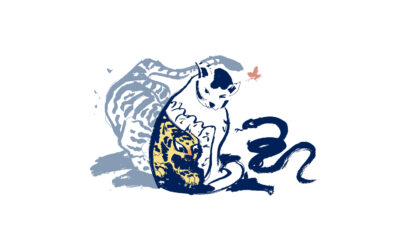To the very young, earlier generations’ lives must seem redolent of ancient history; and hearing too many details of pre-meme days either engenders a horrified shudder or absolute boredom. This is of course matched by their parents’ utter mystification at how they spend their time. For the corporates trying to reach these consumers, however, the messaging service LINE’s (link) regular surveys on the ‘hottest’ interests of Japan’s youth (15-24yo) offer valuable insights. And for much of 2020, both the girl band NiziU and the anime Demon Slayer (鬼滅の刃, Kimetsu no Yaiba) have dominated every ranking.
NiziU at first glance appears as a Japanese version of the typical K-Pop girl band, formed via a (televised and streamed online) casting and training camp, and appeals more to the female demographic. Kimetsu is in contrast more popular among young men: more interestingly, it again seems to have a well-known formula. What then has led to their record-shattering success, and what does that tell us about broader changes in the mentality of Japan’s young?
We believe there are six elements that together constitute the ‘cool factor’ in today’s youth culture:

1. Being uniquely in sync with the Zeitgeist
Both of these cultural phenomena use existing expectations and then subvert them. NiziU uses the usual casting process not to sniff out weak links, but to ‘criticise with love’ (愛のあるダメ出し). It is a friendly competition, not a ruthless winnowing. This taps into many girls’ disillusionment with the crushing conformity often demanded by Japanese society: to not step out of line, to fit into the group, to be moulded. The show critiques maxims such as “humans become real people when raised strictly” (人は厳しく育てると真人間になる), and instead judges contestants as individuals with a unique set of skills and standards.
Kimetsu’s subversion can be seen in its nihilistic approach: in contrast to most anime, there is little to distinguish protagonists and antagonists. These characters all have tragic backstories in the face of a cruel, cold and unreasonable world. They react to this by claiming not to care about anything, and yet bravely continue to make the best of their situations. This attitude speaks strongly to a younger generation who have little expectation of a better life than their parents.
2. Having an edge to it
To be ‘cool’ is to be more than just popular: it must involve an exclusivity and avant-garde twist that is lost on mainstream consumers. NiziU’s superficial conformity to the genre’s norms only gradually revealed its peculiarities: its unusual Japanese-Korean casting and novel approach to training. Kimetsu – based on a manga long perceived by the anime industry as too niche and dark –
was more of a surprise. Its unusual Taisho Era setting (Japan’s brief version of the roaring 1920s) tapped into a wider nostalgia, with an edgy retro aesthetic that has become only more desirable, with 1920s-style products growing fast (for example, The Tailor: link).
3. Modern and omni-channel
Although the integrated nature of content, channels, production and merchandising has long been a hallmark of all Japanese entertainment, NiziU and Kimetsu have leveraged this still further. Both NiziU’s weekly streaming on Hulu and ever-rolling YouTube content allow fans to track the casting and training camp progress. Meanwhile, to walk around Tokyo in 2021 is to be confronted by something Kimetsu-branded on almost every corner.
4. Action / A sense of overcoming and achievement
The young in particular find action (fighting and swords) and a sense of overcoming adversity cool: being an action-packed anime, Kimetsu has this truism covered. Less obvious is how NiziU approaches this: its producer, J. Y. Park, has become a star in his own right, personifying the ‘dream boss’ for this new generation. By fostering and celebrating each individual’s achievements on the show, he demonstrates that weaknesses can be overcome and strengths acted upon in a purely positive and ‘loving’ way.
5. Relatability: A shared ‘iconic’ language
It has become vital for shows to be relatable: they must allow young fans the chance to bask in the illusion of being a ‘part of it all’. This apparent accessibility is key to creating buzz and relevance: today’s young prefer engaging role models who share their social media sphere to the aloof superstardom of a Madonna. A shared language springs up – whether in actions or words – that older generations are not meant to understand, and which makes the shows yet more appealing.
For NiziU, its relatability stems from its ‘everyday girls who made it due to hard work and the right encouragement’ vibe: it is not about unattainable levels of talent. Copying dance moves has always allowed fans to feel part of a pop group’s world, but the show’s continual streaming has gone far beyond that in making it intrinsic to young fans’ lives. Similarly, Kimetsu has its share of iconic moves and phrases (as every anime does), helping fans to bring the show to life via cosplay and gadgets, while its most iconic ‘fighting screams’ remain unintelligible to anyone over thirty.
6. A hidden layer of complexity
It has always been true that to be a ‘real’ fan is to enjoy one’s true understanding of what makes any cultural product or event special: a sense of being initiated into its mysteries, its essence. In both NiziU and Kimetsu there is a dimension of social critique that allows an older generation to be engaged with shows not obviously designed for them. They can enjoy cultural references often lost on their children, and this removes a potential barrier to younger children’s consumption, for whom they are the ‘gatekeepers’ of content in their homes. For example, NiziU acts as critical counterpoint to how hierarchies, discipline and personal growth are viewed and structured within Japanese society; and underlying Kimetsu is a contemplation of power, abuse and duty.
Conclusion: how brands respond
Finding the perfect content to add some ‘cool’ to myriad products is big business in Japan. The Lawson tie-ups with NiziU and Kimetsu resulted in continuously sold-out products and record sales (link), such as 10mn onigiri sold in ten days; and Kura Sushi (a chain of sushi restaurants) has seen 8% sales growth since its tie-up. The halo of cool for collaborating brands who can successfully navigate between the nostalgia, non-conformity and nihilism of youth culture is worth searching for.



